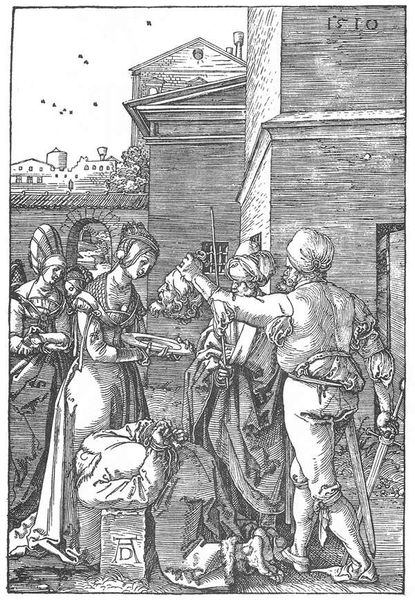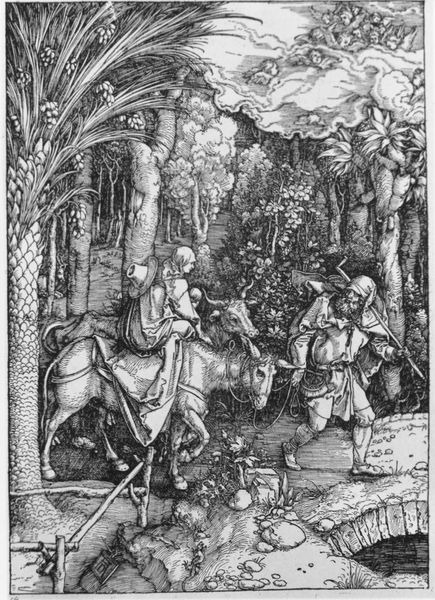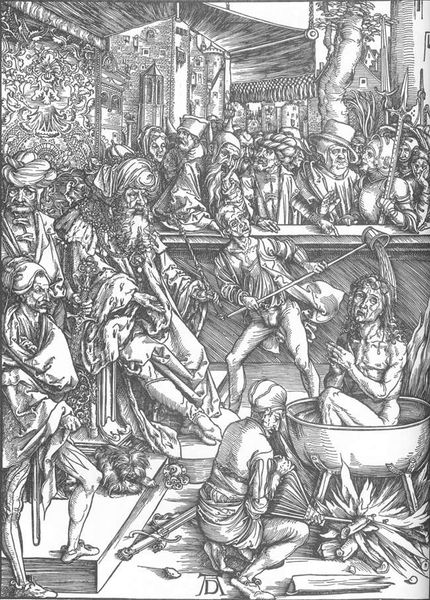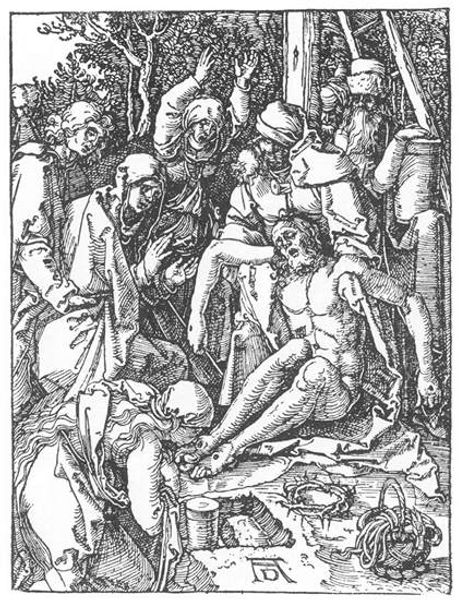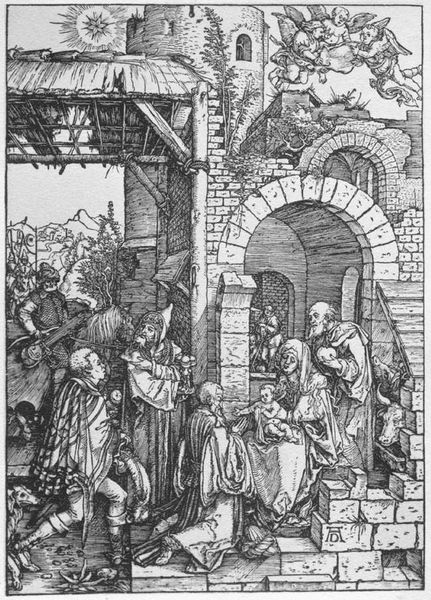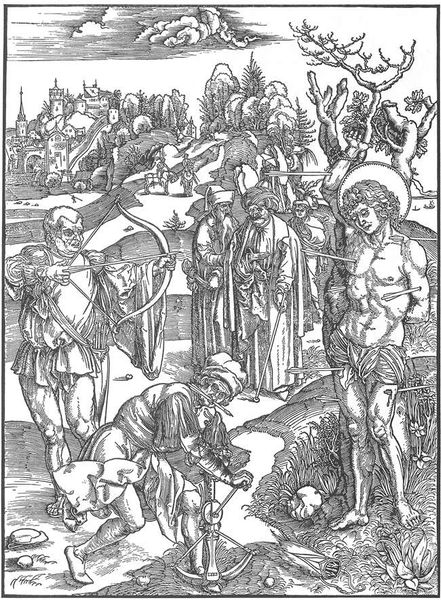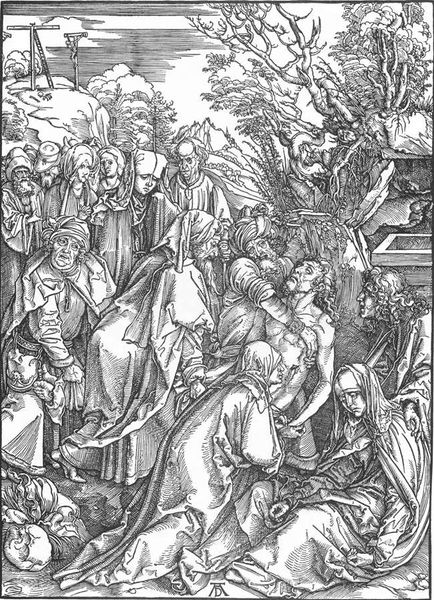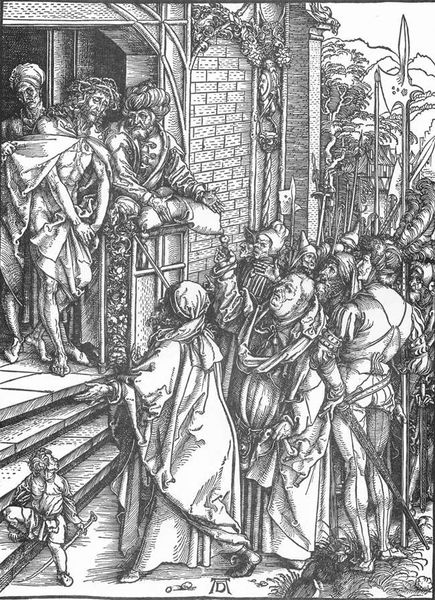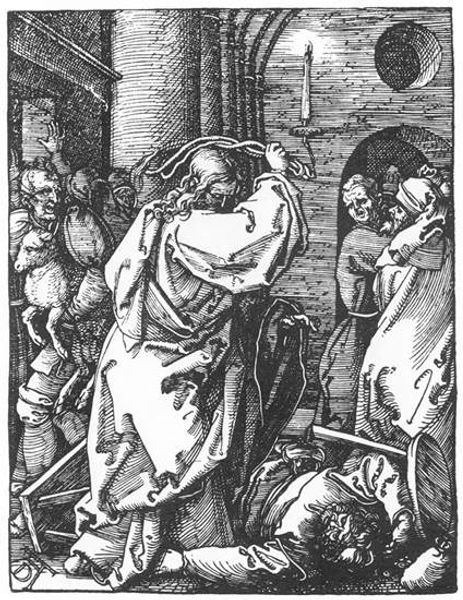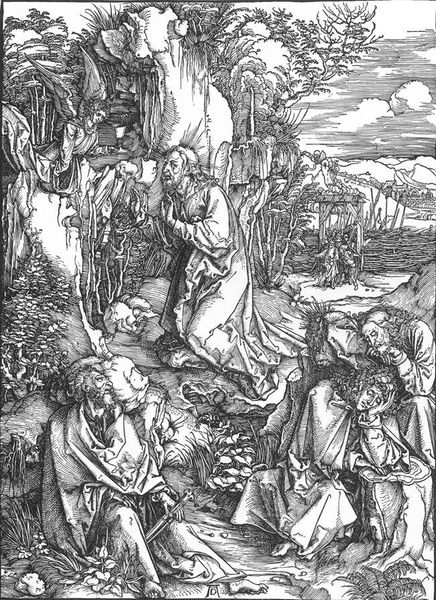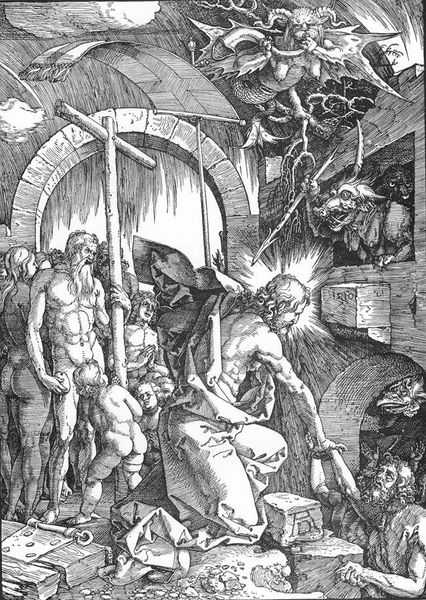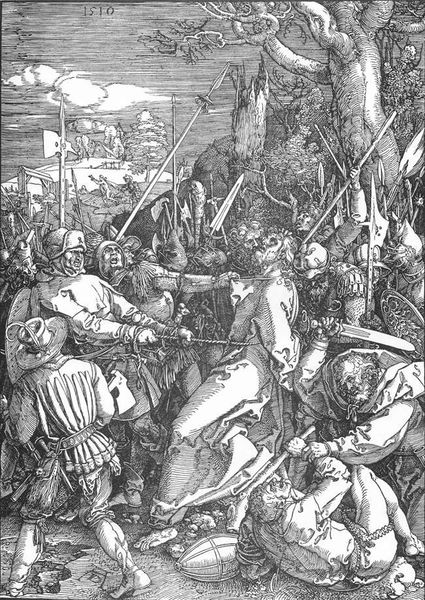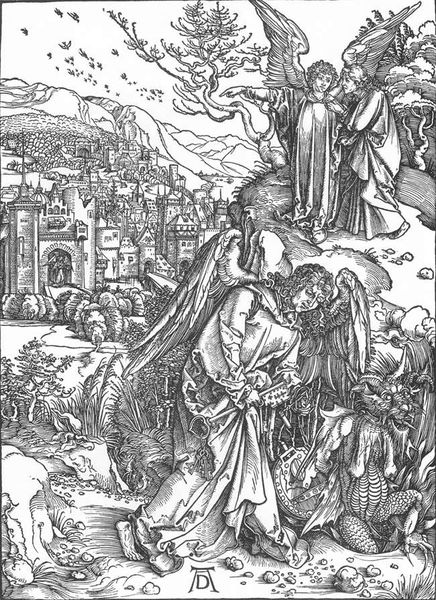
drawing, print, ink, engraving
#
drawing
#
medieval
#
narrative-art
# print
#
figuration
#
ink
#
christianity
#
engraving
Copyright: Public domain
Curator: Today we're examining "Christ Bearing the Cross," a 1498 engraving by Albrecht Dürer, housed at the Albertina in Vienna. Editor: It strikes me immediately as claustrophobic. The composition is so dense; figures press in from every side, almost obscuring Christ himself. The palpable sense of oppression is powerful. Curator: The genius of Dürer lies in his command of line. Notice how each stroke, etched into the metal plate, contributes to the overall texture and emotional impact. The contrast between light and shadow creates an almost palpable sense of depth and drama. The medium itself—engraving—demands meticulous planning. Editor: And it reinforces the narrative of suffering, doesn't it? Look at the context of the late 15th century. The anxieties around plague, religious wars… Dürer uses Christ's ordeal as a lens through which to explore human cruelty and the abuse of power by institutions. The composition mimics the kind of violence and societal strain prevalent at the time. Curator: Indeed. Though primarily a visual representation of religious narrative, Dürer's attention to the details—the folds in fabric, the expressions on the faces of the figures, and, especially, the detailed buildings in the backdrop—suggest the world's physical properties as essential carriers of the spiritual truth of the Gospels. This intersection emphasizes a shift in artistic expression—between purely symbolic representation of Christianity to something more immediate and “real." Editor: I appreciate how the piece highlights not just Christ's suffering, but the presence and resilience of those women present, traditionally marginalized figures given agency through their obvious compassion. Their suffering is also palpable. Are they being properly acknowledged within art-historical canons, or are they further subjugated and essentialized by our continuous engagement? Curator: It is important to examine such frameworks to arrive at a fuller perspective. Dürer here creates not only religious work but something intensely humanist. His technical facility amplifies its effect. Editor: Absolutely. I find it really powerful how Dürer uses that very precise technique to explore the painful contradictions within systems of power. The lasting relevance of the themes he engages with remains hard to deny. Curator: The complexities of faith and power will always invite the sort of artistic interventions and expressions we see here.
Comments
No comments
Be the first to comment and join the conversation on the ultimate creative platform.

